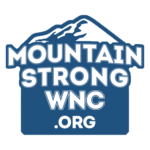Continuum of Care

Promotion
Promotion interventions are designed to help people improve their overall emotional, mental, and physical well-being. Nurturing peoples’ emotional and mental well-being allows them to cope with life’s stressors in healthy ways and reduce their risk of substance misuse. Improving physical health is also associated with reduced rates of substance misuse—though the reasons why are still being investigated.
Promotion interventions can range from individual-focused activities to system-level change. Promoting individual health might include encouraging a healthy diet and exercise or offering socialization activities such as after-school clubs. Examples of activities to promote system-level change include advocating for health equity in policy making and advancing cross-sector collaboration.
Health promotion can occur long before any other behavioral health services, as well as at any stage of the continuum of care. It can have lasting impacts even among people who are not currently at risk of substance misuse, especially among children. In fact, promoting wellness in childhood can help build a foundation for positive health outcomes throughout a person’s life.
Prevention
Prevention interventions provide people with facts, skills, and other knowledge intended to stop the development of negative health behaviors or the onset of SUDs. They seek to reduce risk factors and strengthen protective factors associated with these negative health outcomes, with the goal of preventing them from occurring at all.
Investing in prevention results in fewer people needing treatment and recovery services and promotes population health and well-being. Specifically, prevention efforts are associated with:
- Reductions in substance use and harms related to substance misuse (e.g., overdose)
- Improvements in quality of life and academic and workplace performance
- Lower health care costs for acute and chronic conditions
Preventive interventions are designed to address three levels of risk: universal, selective, and indicated.
Universal interventions
Universal interventions focus on an entire population (e.g., a whole community, school, or neighborhood) without any consideration of substance misuse risk.
Examples include:
- Community policies that promote access to early childhood education
- Implementation or enforcement of anti-bullying policies in schools
- Education for prescribers on prescription drug misuse
- Social skills education for youth in schools
Selective interventions
Selective interventions focus on groups of people with an above-average risk of engaging in substance misuse. Importantly, they serve everyone within that group equally rather than focusing on specific individuals. Examples include:
- Prevention education for new immigrant families living in poverty with young children
- Peer support groups for adults with a history of family mental illness and/or substance misuse
Indicated interventions
Indicated interventions focus on specific people who already misuse substances or engage in high-risk behaviors for beginning substance misuse. However, they are not treatment services and are not appropriate for people who have developed an SUD.
Examples include:
- Information and referral for young adults who violate campus or community
policies on alcohol and drugs - Screening, consultation, and referral for families of older adults admitted to
emergency rooms with potential alcohol-related injuries
Treatment
Treatment interventions provide people with clinical and supportive services that encourage and facilitate them to make behavioral changes. Although more costly and intensive than promotion or prevention, treatment services are a vital piece of the continuum for people with SUDs.
There are many different treatment avenues and modalities, depending on the specific needs of a person. Treatment begins with case identification, a process where a person is screened for a SUD by a provider who then determines whether pursuing treatment services would be beneficial. The provider also determines what type and intensity of treatment would be most beneficial to the person, and whether they can offer it themselves or if a referral to another provider is necessary.
Treatment services can include a wide range of therapies, counseling, education, medications, and other offerings, and can be organized into their own “mini” continuum of care:
- Outpatient services offer a less intense, community-based level of care for people with less severe SUDs.
- Intensive outpatient or partial hospitalization services provide more intense,
comprehensive care for people with more severe SUDs or un-stabilized mental or physical health conditions. - Residential or inpatient services provide continuous, interdisciplinary care in a structured, live-in setting for people with severe SUDs, other significant health impairments, or otherwise require full-time monitoring.
- Medically managed intensive inpatient services are continuous, medically directed care
for people who require around the clock acute stabilization.
Recovery
Recovery interventions provide individuals with a network of comprehensive, long-term services to help them achieve treatment goals and prevent relapse.
Interventions can be provided alongside or following the completion of treatment services. Recovery from SUDs is a non-linear, person-driven process of change through which individuals improve their health and wellness, live a self-directed life, and strive to reach their full potential. The ultimate goals of recovery are to achieve personal growth and reduce or abstain from substance misuse.
According to SAMHSA, there are four core dimensions to recovery:
- Health: Overcoming or managing substance misuse and making informed, healthy choices
- Home: Having a safe, stable living environment
- Purpose: Conducting meaningful daily activities and participating in society
- Community: Having supportive, loving relationships and social networks
Recovery support services include a wide range of opportunities that support these dimensions; examples include mutual aid groups (e.g., 12-step programs), peer support services, recovery community centers, and recovery housing.
